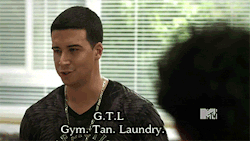
Editor's note: you may need some background on what Macro Maynia is. Find it here.
I get outside. I do it quite a fair bit. For me, nothing beats the turbo-charged ideas spawned through aspirated whispers of the an endorphin infused run. During the monotony of this particular aerobic excursion, a runner's high welcomes thoughts that ought best be relieved to my desk as work. None-the-less, the release of inhibitory transmitters via endogenous opioids could not stop me from concerning myself with the fact that I wanted to make the idea of Alteryx macros relate-able to those who were new to analytics, or at the very least, early in their Alteryx journey.
The challenge was coming up with an everyday example where at the core the process was the same, yet could be executed in different ways sensible enough to extricate the behaviors between the three main macro types. In addition, I wanted to avoid obfuscation of the behavior by providing different 'data sets' to best exemplify the different behavior. Apples to apples. Certainly, it might be more compelling to orient the data to the behavior, but I think we need a controlled variable[s] to best communicate what a macro is set to achieve.
My data: Clothes. We all have them; mine certainly less-tasteful than most.
My workflow: Laundering clothes.
Process: We dirty our clothes, pile them into a hamper, drop them in the washer/dryer, and return clothes to their hangers/drawers from whence they came.

What better to use as my example than one item of the iron trifecta? It's a perfect situation.
What is a macro? Every time I have to do laundry, I do this process over and over and over and over... and over. There's got to be a way to do this better and easier. For those who loathe laundry they'd order a laundry service to pick up clothes.
We are all George.
Despite the cost of money, I'm no longer involving myself in this workflow again and again - I've found a 'tool' to perform this service for me. That's my macro - a tool to do something that's net going to save me time and complication (despite the fact that the same workflow is happening, but being condensed to a service). Now the laundry service has pricing tiers that reflect different services and I will use said tiers/services as my 'behavior'.
Standard Macro: This is the 'economy tier'. The laundry service simply picks up my laundry, dumps it all into one industrial washer, then dryer and then returns it to me folded. Done. Saved time.
A real-life re-enactment of me in the laundry room
Batch Macro: This is the 'standard tier'. Now if someone takes a little more pride in their clothes and spends a bit more coin on it, they'll probably want to have the clothes laundered in the way that's recommended on the clothing tags. Some clothes require hot water to get the cleanest wash, some clothes require cold water to reduce the chance of color-bleeding. Same goes with with drying cycles - some clothes need to by tumbled dried on low settings, some high, some hang dried. The service would take the laundry and group it into subcategories or batches with a specific set of instructions attached (wash cold, dry low). In the end I still get all my data folded up and my clothes (data) has been treated differently based on the different parameters given by their tags.
Iterative: This is the 'premium tier'. It happens to all of us. We have stubborn coffee stains, pen marks, and *gasp* clothes we once used to paint the one thing. When we deliver our clothes to the laundry service, we'd like to submit it with an extra note: there are some clothes in here that we want to make sure get cleaned. The service as a result is going to run a load of laundry and check to see if the wash had the desired effect. For those clothes that were intermingled without stains, they'd likely set those aside to get dried and folded. However, some of those galling, irksome stains will require another run in the wash. Hence these clothes are returned to the beginning of the process where they are washed again, and again whilst they remain stained. Eventually this iterative, looping process will end as soon as all clothes pass muster. It then gets folded and arrives at my doorstep. Bonus understanding points: Sometimes this service might not have time to run this process until all clothes are clean, they may have a limit of 10 re-runs on the clothes before they give up. Thus there are two ways this process can end: when a certain criteria is met (clothes clean), or a certain number of loops/re-runs are done before giving up.
I hope you feel as reinvigorated about laundry as I do right now.


